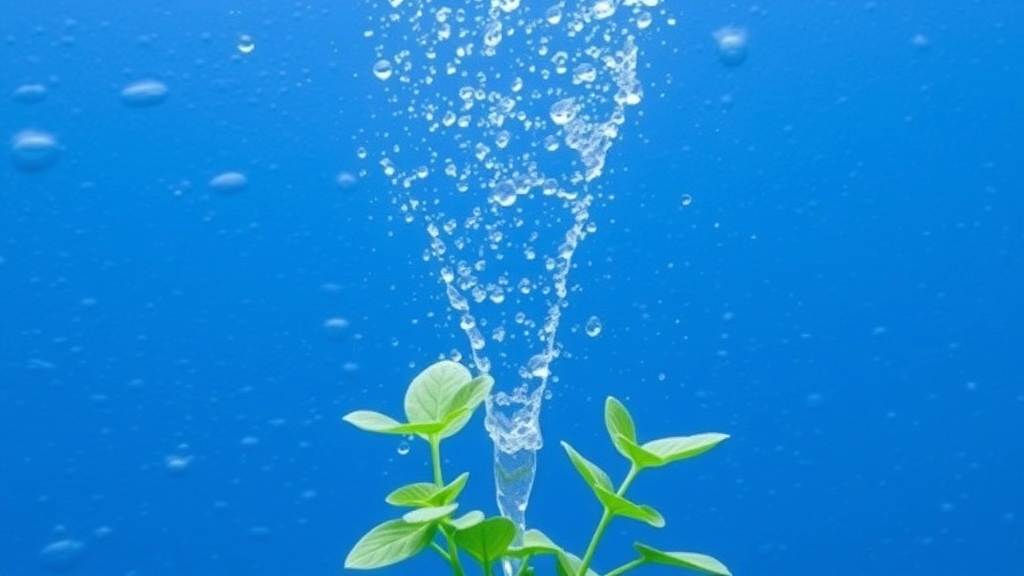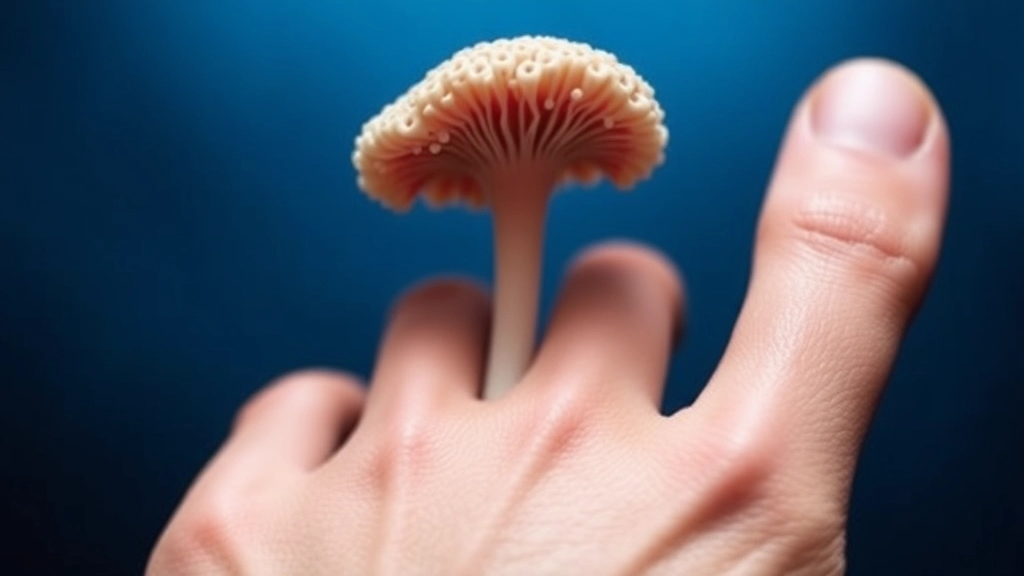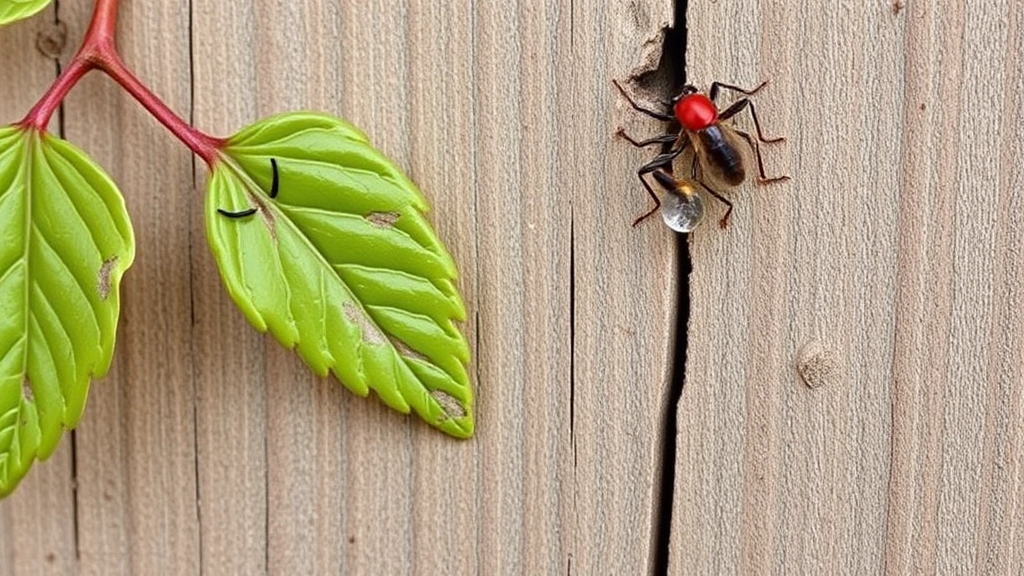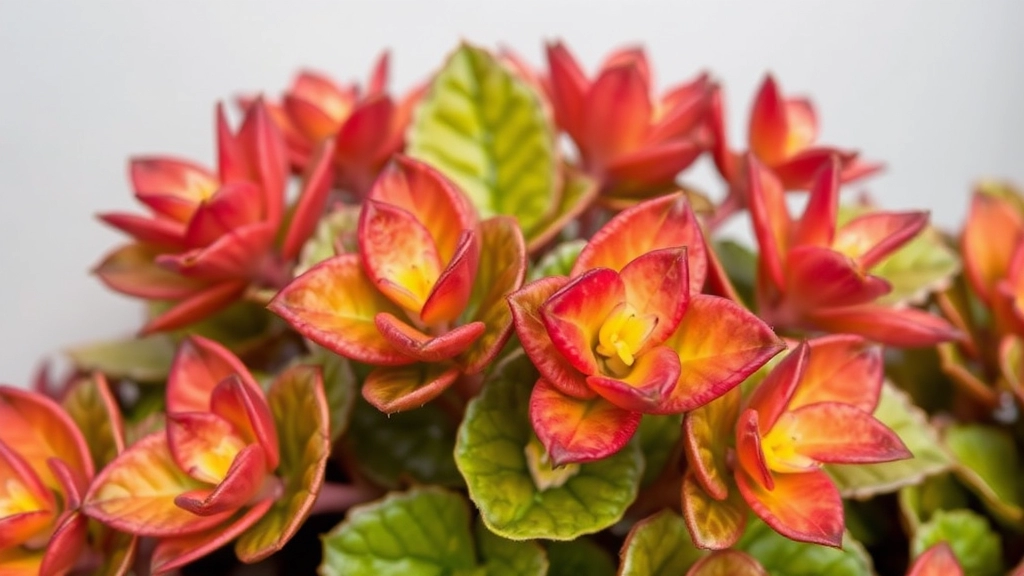Kalanchoe Care: Addressing Brown Leaves
Seeing your Kalanchoe leaves turning brown can be quite disheartening. As a plant enthusiast, I’ve been there too, and I understand the frustration. Brown leaves on your Kalanchoe could be a sign of several issues, from watering mistakes to sunburn, or even pest infestations. It’s crucial to identify the root cause to nurse your plant back to health.
Common Causes of Brown Leaves
- Watering Issues: Both overwatering and underwatering can cause brown leaves.
- Sun Exposure: Too much direct sunlight can scorch the leaves.
Solutions
Make sure your Kalanchoe is in well-draining soil and water it only when the top inch of soil feels dry. If you notice brown spots, consider moving your plant to a spot with indirect light. By addressing these common issues, you can keep your Kalanchoe thriving and prevent those dreaded brown leaves.
Common Causes of Brown Leaves in Kalanchoe Plants
Are your Kalanchoe leaves turning brown? This is a common concern among plant enthusiasts. Understanding the reasons behind this issue can help you restore your plant to its former glory.
Several factors can contribute to the browning of Kalanchoe leaves.
1. Watering Mistakes
- Overwatering: This is perhaps the most prevalent cause. Kalanchoe plants prefer their soil to dry out between waterings. Too much water can lead to root rot, which manifests as brown, wilting leaves.
- Underwatering: Conversely, not providing enough water can also cause leaves to brown and shrivel.
2. Sun Exposure
Kalanchoe plants thrive in bright, indirect sunlight. Direct, harsh sunlight can scorch their leaves, leading to brown patches.
3. Fungal Infections
Fungal issues can emerge from excessive moisture, often resulting in brown, mushy leaves.
4. Nutrient Deficiencies
Lack of essential nutrients like nitrogen can cause leaves to yellow and eventually turn brown.
5. Pest Infestations
Pests such as mealybugs and aphids can damage leaves, leading to browning.
6. Soil Drainage
Poor soil drainage can trap excess moisture, promoting root rot and browning leaves.
By identifying these common causes, you can take effective steps to rejuvenate your Kalanchoe. For more detailed information, you can check out our guide on brown spots on Kalanchoe leaves and our essential Kalanchoe care tips for summer.
Watering Mistakes: Overwatering and Underwatering

Ever looked at your Kalanchoe and wondered why those lovely leaves are turning brown? Most of the time, it all boils down to watering mistakes.
Overwatering: The Silent Killer
Overwatering is like that friend who overstays their welcome—at first, it seems fine, but then it just becomes a problem.
- Signs of Overwatering:
- Yellowing leaves
- Mushy stems
- A musty smell from the soil
When you give your Kalanchoe too much water, it can lead to root rot, which is a death sentence for your plant.
To avoid this, let the soil dry out completely between waterings. Stick your finger in the soil; if it feels dry an inch down, it’s time to water.
Underwatering: The Other Extreme
On the flip side, underwatering can also cause those brown leaves.
- Signs of Underwatering:
- Crispy, dry edges on leaves
- Wilting or drooping appearance
- Soil pulling away from the pot edges
If your Kalanchoe is thirsty, it will show you! A good rule of thumb is to water when the top inch of soil is dry.
Finding the Balance
So, how do you find that sweet spot?
- Watering Tips:
- Check the soil moisture regularly.
- Adjust your watering schedule based on the season—plants need more water in the growing season.
- Use pots with drainage holes to prevent water from sitting at the bottom.
Keeping an eye on your watering routine can make all the difference in keeping your Kalanchoe healthy and vibrant.
Sun Exposure and Sunburn Prevention
Are your Kalanchoe leaves turning brown despite your best efforts? One common culprit could be improper sun exposure.
Kalanchoe plants thrive in bright, indirect sunlight. However, too much direct sunlight can lead to sunburn, resulting in unsightly brown patches on the leaves.
Tips for Optimal Sun Exposure:
- Location Matters: Place your Kalanchoe in a spot where it receives bright, indirect light. A south-facing window is ideal, but be cautious of harsh afternoon sun.
- Rotate Regularly: To ensure even growth, rotate your plant every couple of weeks. This helps all sides receive adequate light without risking sunburn.
- Watch for Signs: If you notice leaf edges turning brown or crispy, it may be a sign of too much sun exposure.
- Use Sheer Curtains: If your plant is in a particularly sunny spot, consider using sheer curtains to diffuse the light.
- Adjust Seasonally: During summer, your Kalanchoe may need more shade. In winter, it may benefit from a bit more direct sunlight.
By ensuring your Kalanchoe receives the right amount of light, you can help maintain its vibrant green leaves. For more detailed care tips, check out our complete guide to Kalanchoe plant care and learn how to manage why your Kalanchoe might not be flowering.
Identifying and Treating Fungal Infections

When caring for your Kalanchoe, you might notice brown leaves that could indicate a more serious issue, such as a fungal infection. Understanding how to identify and treat these infections is crucial for preserving the health of your plant.
Common Signs of Fungal Infections:
- Discolouration: Look for brown spots or patches on the leaves.
- Wilting: Leaves may appear limp or droopy.
- Mould: A fuzzy or powdery substance on the soil or leaves can indicate fungal growth.
Fungal infections often thrive in overly damp conditions, making it essential to monitor your watering practices.
Steps to Treat Fungal Infections:
- Isolate the Plant: Prevent the spread of the infection to other plants by moving the affected Kalanchoe away.
- Improve Air Circulation: Ensure that your plant has adequate airflow by spacing it properly and avoiding overcrowding.
- Adjust Watering Routine:
- Allow the top inch of soil to dry out before watering again.
- Water at the base of the plant to keep leaves dry.
- Use Fungicides: If the infection persists, consider applying a fungicide specifically designed for houseplants. Follow the instructions carefully to avoid harming your Kalanchoe.
- Remove Affected Leaves: Trim off any severely affected leaves to prevent further spread.
By addressing fungal infections promptly, you can help your Kalanchoe recover and maintain its vibrant health.
Impact of Nutrient Deficiencies on Leaf Health
Have you ever noticed your Kalanchoe leaves turning brown and wondered if it’s related to what you’re feeding your plant? Nutrient deficiencies can significantly affect the health of your Kalanchoe, leading to browning leaves and stunted growth.
Key Nutrients to Consider:
- Nitrogen: Essential for leaf growth. A lack of nitrogen can cause older leaves to yellow and brown.
- Phosphorus: Important for root development and flower production. Deficiency can lead to dark spots on leaves.
- Potassium: Helps in overall plant health and resilience. Without it, leaves may become crispy and brown at the edges.
Signs of Nutrient Deficiency:
- Yellowing Leaves: Often indicates nitrogen deficiency.
- Brown Leaf Edges: A sign of potassium deficiency.
- Dark Spots: May point to a phosphorus shortage.
To avoid these issues, consider the following tips:
- Use a Balanced Fertilizer: Opt for a fertiliser specifically formulated for succulents, ensuring it contains all essential nutrients.
- Follow a Feeding Schedule: During the growing season, feed your Kalanchoe every 4-6 weeks.
- Monitor Soil Quality: Regularly check and refresh the soil to maintain nutrient levels.
Understanding nutrient deficiencies is crucial for maintaining vibrant Kalanchoe leaves. For more detailed care instructions, check out our Complete Guide to Kalanchoe Plant Care and learn how to fix drooping Kalanchoe leaves.
VI. Pest Infestations That Cause Browning

Have you noticed those unsightly brown spots on your Kalanchoe leaves?
It might not just be a watering issue or a lack of sunlight. Pests could be the sneaky culprits behind that browning.
Common Pests to Watch For:
- Mealybugs: These little white fluff balls love to suck the sap from your plant, leading to yellowing and browning leaves.
- Spider Mites: Tiny and often overlooked, these pests create fine webs and can cause significant damage if left unchecked.
- Aphids: These green or black bugs can cluster on new growth, draining your plant’s vitality and causing leaves to brown.
How to Spot an Infestation:
- Look closely at the undersides of leaves. Pests often hide there.
- Check for sticky residue or a sooty mould, which indicates a pest problem.
- If you see wilting or browning leaves, it’s time to investigate.
Treatment Options:
- Insecticidal Soap: A gentle yet effective way to tackle pests without harming your plant.
- Neem Oil: This natural remedy works wonders against various pests and can help prevent future infestations.
- Manual Removal: For small infestations, simply wiping the pests off with a damp cloth can be effective.
Prevention Tips:
- Regularly inspect your plants. A quick check can save you a lot of hassle later.
- Keep your Kalanchoe healthy with proper care, as stronger plants are less susceptible to pests.
Improving Soil Drainage to Prevent Root Rot
Have you noticed your Kalanchoe leaves turning brown and wondered if the soil might be the culprit?
Soil drainage is crucial for the health of your Kalanchoe. Poor drainage can lead to waterlogged roots, making them susceptible to root rot. Here’s how to ensure your plant thrives:
- Choose the Right Pot:
- Opt for pots with drainage holes. This allows excess water to escape, keeping the roots dry.
- Use Well-Draining Soil:
- A cactus or succulent mix is ideal. You can also mix standard potting soil with sand or perlite to improve drainage.
- Avoid Overwatering:
- Check the top inch of soil. If it feels dry, it’s time to water. If it’s still moist, hold off for a few days.
- Elevate the Pot:
- If your pot sits in a saucer, elevate it slightly to prevent water accumulation.
- Repot When Necessary:
- If the roots are crowded or the soil seems compacted, consider repotting your Kalanchoe into fresh, well-draining soil.
By ensuring proper soil drainage, you can prevent root rot and keep your Kalanchoe healthy. For more detailed care tips, check out our ultimate guide to Kalanchoe care. Additionally, if you’re dealing with specific varieties, our Mother of Thousands care guide offers tailored advice.
Proper Care Tips to Maintain Healthy Kalanchoe Leaves
So, you’ve tackled the common issues causing brown leaves in your Kalanchoe, but how do you keep those vibrant green leaves thriving?
Let’s dive into some straightforward care tips that will have your plant looking its best.
Water Wisely
- Check the Soil: Always feel the top inch of soil. If it’s dry, it’s time to water.
- Use Well-Draining Soil: A mix designed for succulents helps prevent overwatering. For more details, check out the best soil for Kalanchoe Blossfeldiana care tips.
- Watering Schedule: Generally, every 2-3 weeks works, but adjust based on your environment.
Light It Up
- Bright, Indirect Light: Kalanchoe loves light but can get sunburnt. Place it near a window with filtered sunlight.
- Rotate Regularly: Keep your plant even by rotating it every few weeks.
Feed Right
- Balanced Fertilizer: Use a diluted liquid fertilizer during the growing season (spring and summer).
- Frequency: Every month should do the trick, but don’t overdo it!
Keep an Eye on Pests
- Regular Checks: Look under leaves and around the base for pests like mealybugs or aphids.
- Natural Remedies: A gentle soap solution can help if you spot any unwelcome guests.
Prune and Clean
- Remove Dead Leaves: Snip off any brown or shrivelled leaves to help the plant focus its energy.
- Dust Off: Gently wipe leaves with a damp cloth to keep them clean and photosynthesizing effectively.
Temperature Matters
- Ideal Range: Kalanchoes prefer temperatures between 18-24°C (65-75°F). Avoid drafts and sudden temperature changes. For more information, refer to the ideal temperature for Kalanchoe Blossfeldiana growth.
Patience is Key
- Observe Changes: It may take time for your Kalanchoe to bounce back after adjustments. Be patient!
FAQs on Kalanchoe Leaves Turning Brown
Why are my Kalanchoe leaves turning brown?
Brown leaves on your Kalanchoe can result from a variety of issues, including overwatering, underwatering, fungal infections, and pest infestations.
What are the signs of overwatering my Kalanchoe?
Signs of overwatering include yellowing leaves, mushy stems, and a musty smell from the soil. Overwatering can lead to root rot, which is detrimental to the plant.
How can I tell if my Kalanchoe is underwatered?
Underwatered Kalanchoe will show crispy, dry edges on leaves, a wilting or drooping appearance, and soil that pulls away from the edges of the pot.
What are common signs of fungal infections in Kalanchoe?
Fungal infections often manifest as brown spots or patches on the leaves, wilting, and the presence of a fuzzy or powdery substance on the soil or leaves.
How can I treat fungal infections in my Kalanchoe?
To treat fungal infections, isolate the plant, improve air circulation, adjust your watering routine, use fungicides if necessary, and remove affected leaves.
Which pests commonly affect Kalanchoe plants?
Common pests include mealybugs, spider mites, and aphids. These pests can cause browning leaves by sucking the sap and draining the plant’s vitality.
How do I spot a pest infestation on my Kalanchoe?
Look closely at the undersides of leaves, check for sticky residue or sooty mould, and investigate any wilting or browning leaves.
What are effective treatments for pest infestations on Kalanchoe?
Effective treatments include insecticidal soap, neem oil, and manual removal of pests with a damp cloth.
How can I prevent my Kalanchoe from getting pest infestations?
Regularly inspect your plants and keep them healthy with proper care. Stronger plants are less susceptible to pests.
What are some general watering tips for Kalanchoe?
Check the soil moisture regularly, adjust your watering schedule based on the season, and use pots with drainage holes to prevent water from sitting at the bottom.
References
-
Gardening Know How: Kalanchoe Plant Care
-
The Spruce: How to Care for Kalanchoe
-
The Old Farmer’s Almanac: Kalanchoe
